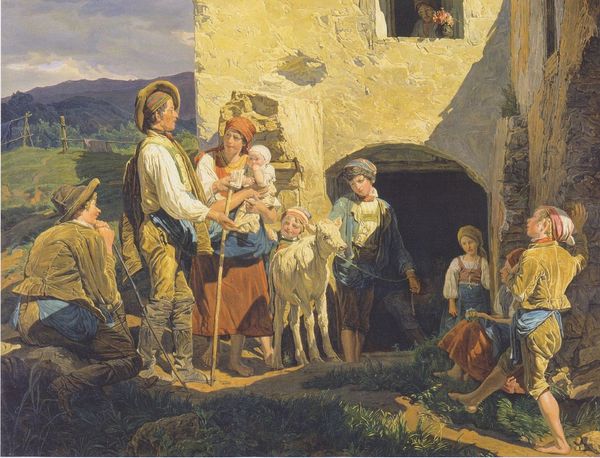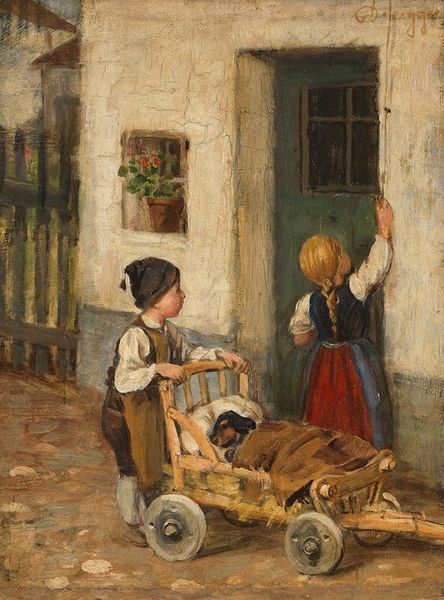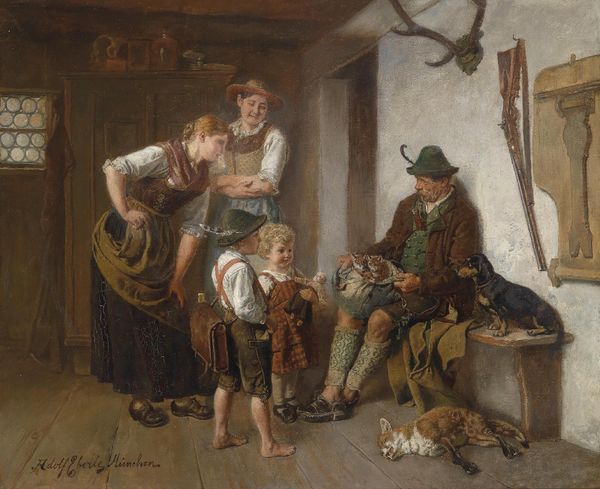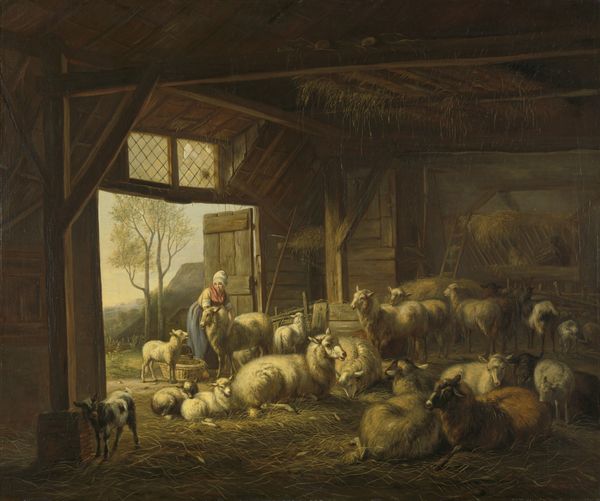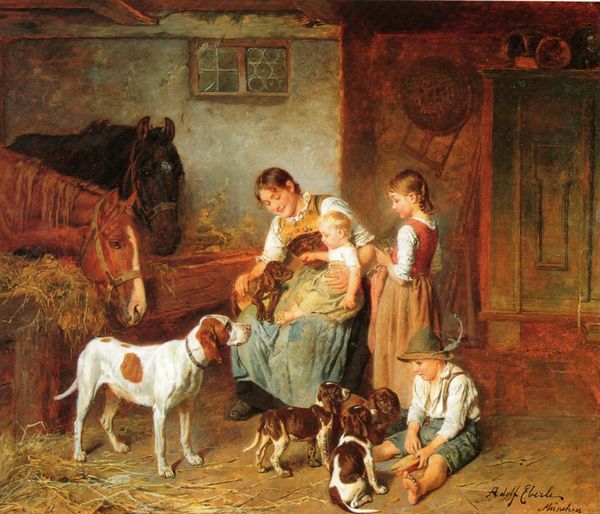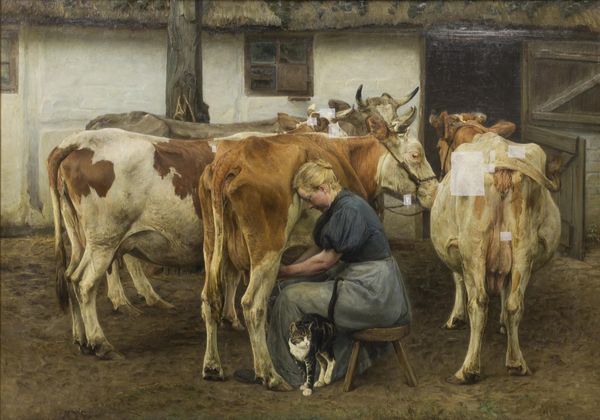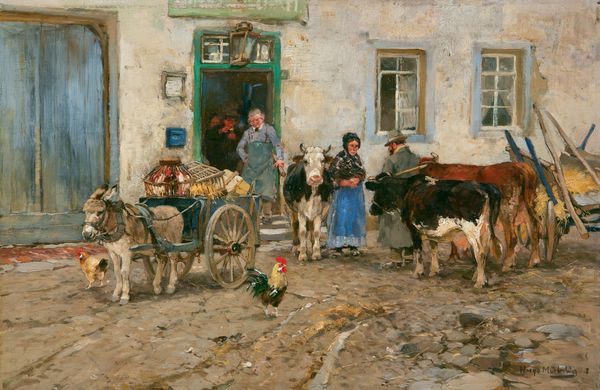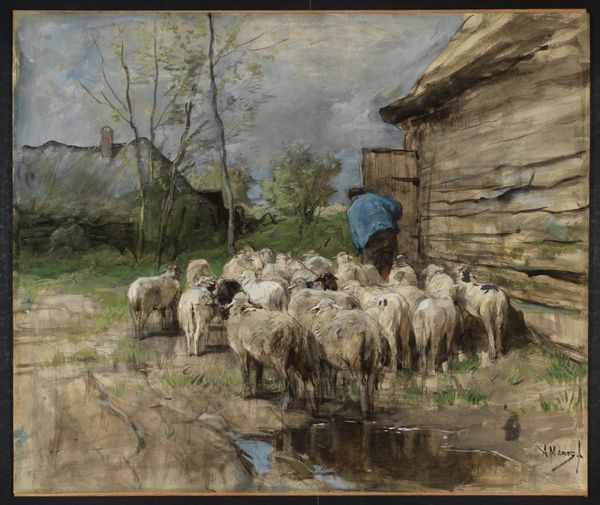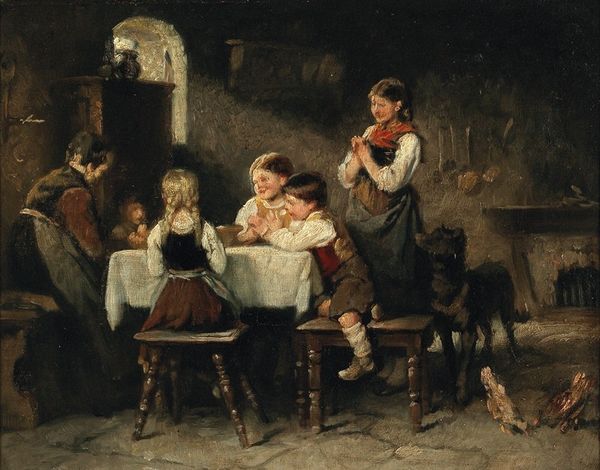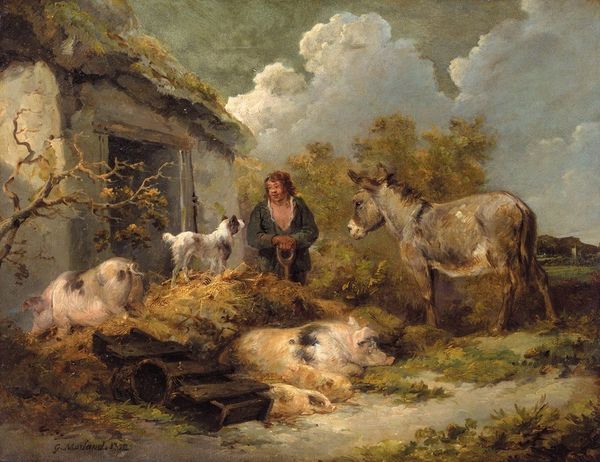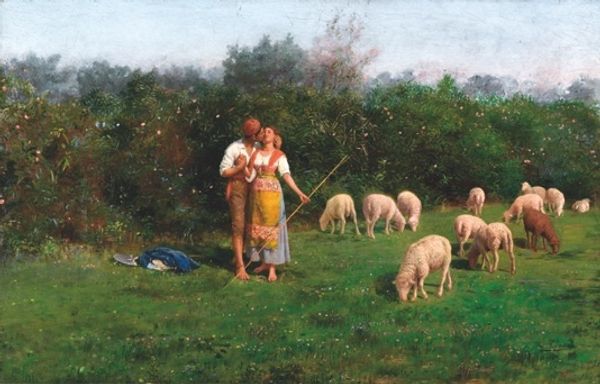
painting, oil-paint
#
gouache
#
painting
#
oil-paint
#
landscape
#
figuration
#
oil painting
#
underpainting
#
genre-painting
#
realism
Dimensions: 50.5 x 63.5 cm
Copyright: Public domain
Curator: What a charming scene! I’m immediately struck by the innocence and quiet joy radiating from the painting. It’s as though a sweet moment has been frozen in time. Editor: Indeed, a moment that reinforces very particular, probably outdated, narratives about pastoral childhood and rural life, to be precise. But before we get into the cultural underpinnings, let's orient our audience. What can you tell me about this work? Curator: The artist is Adolf Eberle, and the painting is titled "Feeding the Sheep". It seems to capture a genre scene, perhaps painted with oils. Editor: "Feeding the Sheep"... Well, from my vantage point, what Eberle offers isn't merely a snapshot of idyllic rural existence, but something much more intricate. I find myself considering how the presentation of rural life—especially the relationship between women and animals—was a construction, especially if we reflect on gendered divisions of labor and the mythologizing of country life throughout history. Curator: It's a tender depiction. The girls’ bare feet remind me of the connection to the land, reminiscent of the age-old archetypal motif of the shepherdess—a symbol for simpler times and harmony. I'm curious: does the symbolism strike you differently? Editor: In a way, it is a symbolic echo. Consider, though, the context: the time in which Eberle was working. Were these portrayals intended to highlight some existing realities? Or, more problematically, to obscure the harsh realities experienced by rural working-class girls? Look, there's such emphasis on natural innocence. I question whose desires are served when we romanticize rural, agricultural environments, obscuring the inequalities inherent to agrarian economic systems. Curator: That contrast highlights how imagery reflects aspirations more than accurate documentation. Still, observe how all creatures, human and animal alike, express the harmony with nature—as symbols—evoking safety, protection, and nourishment... Don't these echo deeper symbols of connection and communal unity? Editor: Well, I tend to examine closely how these narratives around “harmony” serve power. It’s a pretty tableau, skillfully composed—yes. But the painting is perhaps an entry point into discussions of the real, gritty socio-economic factors shaping lived experiences, as distinct from idyllic visions. Curator: So the image speaks to you as less a painting and more a commentary of the historical social structures in agrarian societies. Food for thought indeed! Editor: Precisely. Every artwork provides that unique opportunity for thoughtful examination.
Comments
No comments
Be the first to comment and join the conversation on the ultimate creative platform.
